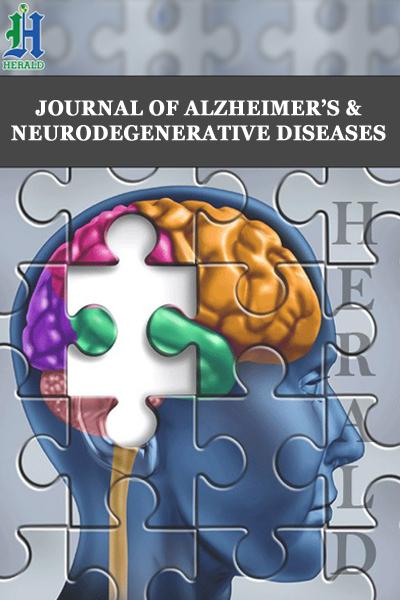
The Study of Aging in Caenorhabditis elegans
*Corresponding Author(s):
Fran NorflusDepartment Of Biology, Clayton State University, Georgia, United States
Tel:+1 6784664852,
Email:fnorflus@clayton.edu
INTRODUCTION
Because humans have a long lifespan relative to other organisms, aging studies have been performed in a variety of systems. Caenorhabditis elegans (C. elegans) is one model organism that has been used to study aging due to its short life span (about 3 weeks), low cost for maintenance, its ease of cultivation and the fact that it produces large number of offspring [1-2]. The mechanisms involved in aging in C. elegans have also been studied in other organisms, including mammals. Among these mechanisms are oxidative damage, dietary restriction, reduction in the Insulin/Insulin-like Growth Factor (IGF) signaling pathway and decreased TOR (Target of Rapamycin) signaling [1-4].
Oxidative damage in C. elegans has been shown to play a prominent role in aging. The mev-1 mutants have increased production of reactive oxygen species and have shortened life spans [1] while daf-2 mutants that have increased antioxidant genes, including a gene for Superoxide Dismutase (SOD) and mutations in the Insulin /Insulin-like Growth Factor (IGF) receptor have longer life spans compared to wild type strains [1-3]. One study has found that when mbk-1 is lost, the lifespan of daf-2 is shortened. MBK-1 has been identified as a protein kinase [4].
Previous studies have shown that dietary restriction extends the lifespan of both C. elegansand mammals [5-6]. Effects on the insulin-like growth factor signaling pathway and lysosomal degradation by autophagy are mechanisms involved with this life extension. ATG18 helps to maintain lifespan in C. elegans. It has also been found that the mammalian homolog WIPI is involved with age-related human diseases [5]. Other studies have looked at the effect of diet on longevity. Recent research with C. elegans shows that diets high in glycogen decrease lifespan and accelerates the aging of the daf-2 worms that normally have an extended lifespan [7].
C. elegans is also a valuable organism to use to study aging since many mutant strains are available from the Caenorhabditis Genetics Center. Specific strains of C. elegans can be found by searching the wormbase website but some examples can be found at this link: http://www.wormbase.org/search/gene/aging%20mutants. Studies have also been done with C. elegansto identify drugs that could delay aging both in these organisms and in mammals. Many of these drugs were found to increase the resistance to oxidative stress and target intracellular signaling [3].
Studies on aging in C. elegans require synchronized populations to be used so that the animals are all of the same age. One common mechanism used is to treat the C. elegans with bleach so that only the eggs remain. Then, the drug 5-fluoro-2’-deoxyuridine (FUdR) is used which kills diving cells so that the adult C. elegans will remain but no further offspring will be viable. It is important, though, that the FUdR is administered to adults as the drug is toxic to young C. elegans. In order to do the experiments, the timing of administering the C. elegans is critical. The drug is toxic to larvae so the C. elegans should be transferred to plates with the FUdR just before they start laying eggs. If it is given to the worms when they are young, the survival rate will be low. In addition, if the C. elegans are too old, the hatched C. elegans may be able to survive the drug treatment [1-2].
REFERENCES
- Gruber J, Ng LF, Poovathingal SK, Halliwell B (2009) Deceptively simple but simply deceptive--Caenorhabditis elegans lifespan studies: considerations for aging and antioxidant effects. FEBS Lett 583: 3377-3387.
- Stroustrup N, Ulmschneider BE, Nash ZM, López-Moyado IF, Apfeld J, et al. (2013) The Caenorhabditis elegans Lifespan Machine. Nat Methods 10: 665-670.
- Ye X, Linton JM, Schork NJ, Buck LB, Petrascheck M (2014) A pharmacological network for lifespan extension in Caenorhabditis elegans. Aging Cell 13: 206-215.
- Mack HID, Zhang P, Fonslow BR, Yates JR (2017) The protein kinase MBK-1 contributes to lifespan extension in daf-2 mutant and germline-deficient Caenorhabditis elegans. Aging. 9: 1414-1432.
- Fontana L, Partridge L (2015) Promoting health and longevity through diet: from model organisms to humans. Cell 161: 106-118.
- Minnerly J, Zhang J, Parker T, Kaul T, Jia K (2017) The cell non-autonomous function of ATG-18 is essential for neuroendocrine regulation of Caenorhabditis elegans lifespan. PLoS Genet 13: 1006764.
- Gusarov I, Pani B, Gautier L, Smolentseva O, Eremina S, et al. (2017) Glycogen controls Caenorhabditis elegans lifespan and resistance to oxidative stress. Nat Commun 8: 15868.
Citation: Norflus N (2017) The Study of Aging in Caenorhabditis elegans. J Alzheimers Neurodegener Dis 3: 013.
Copyright: © 2017 Fran Norflus, et al. This is an open-access article distributed under the terms of the Creative Commons Attribution License, which permits unrestricted use, distribution, and reproduction in any medium, provided the original author and source are credited.

